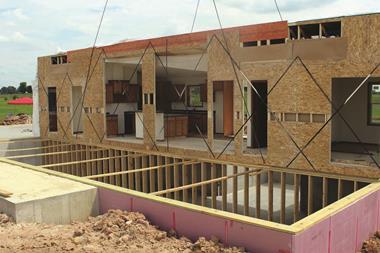A couple of weeks ago I visited Brent Cross Town, a 180-acre, £7bn new neighbourhood for north-west London being co-developed by Related Argent and Barnet Council. Plans are advanced but work is still at an early stage.

A visitor pavilion, a new park, a children’s play area and other pieces of public realm gave a welcoming vibe, but construction is mostly at the slabs-of-concrete stage.
Argent joint managing partner Nick Searl talked me enthusiastically through the scheme with the aid of glitzy videos and an extensive scale model of the masterplan, which takes pride of place in the pavilion.
The scheme aims to provide up to 6,700 homes, a retail centre with shops, cafés and restaurants, up to 3m sq ft of offices and 20ha of parks. It will also be served by a new mainline rail station, Brent Cross West, due to open early in 2023 and set to whisk people to Argent’s Kings Cross development in about 12 minutes – rail strikes permitting.
The entire project aims to be net zero carbon by 2030, an intent underscored by a district heating network that Searl said would feature Europe’s largest air-source heat pump installation, and planned office buildings that make extensive use of structural timber.
What struck me most on the day was not just the ambition behind the scheme but its level of detail. For example, the planned park layout includes a 2.5km loop, perfect for hosting a new Parkrun event.
Similarly, the developers have consulted with charity Women in Sport, to ensure that sporting facilities encourage participation without gender bias. One simple change, according to Searl, is to ensure that facilities have multiple points of entry. If an intimidating huddle of boys were to form at one entrance, for example, girls – who studies have shown often drop out of sports at 13 to 14 years old – would still have other options.
All these interventions, from timber and heat pumps to women-friendly parks, are much easier to employ if they are factored into plans at the earliest opportunity. All it takes is – well – a load of arduous upfront effort.
The front-loading of project planning is a trend that is already playing out in the construction sector, after decades of making do. As much as 20% of construction budgets are thought to go on fixing mistakes made during the build, so spending a bit more time, effort and money on getting organised upfront looks like a win-win strategy.
Insightful preparation is also a theme developed in this week’s big interview with Lucy Townsend, head of sustainability at architects firm BDP. The property industry has largely come on board with the need to address its carbon footprint but, she said, many clients still have “a bit of a way to go” in grasping that the thinking needs to run deep, from the earliest conversations about development goals. “I do think that the ambition is there; it’s just the understanding,” she told me, as we talked about the challenges facing the sector.
She also noted how much the breadth of those considerations has grown. “Ten years ago, sustainability was energy,” she said. “That’s what everyone thought about. [But] we’re designing buildings for people, so the health and wellbeing of those occupants is just as important as the energy and carbon.”
As both Searl and Townsend would attest, better outcomes demand better homework. Unfortunately, there are no shortcuts.
































No comments yet